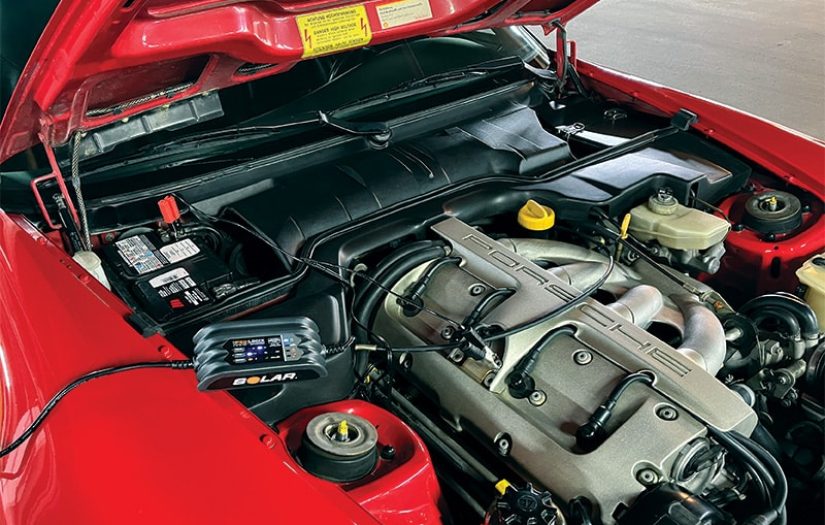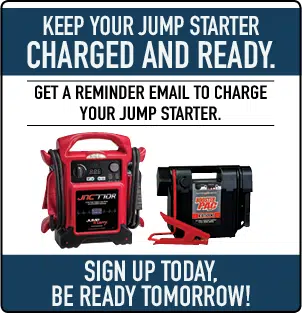There are a lot of different vehicle battery types, so much so that it can get a little confusing, especially when an alphabet soup of abbreviations is used to label most of them. So, we thought it would be handy for our readers to recap the key battery types out there and provide a quick note to help you manage each type. If you have a handle on these four battery types, you’re covered for 90%+ of the vehicle batteries you are likely to encounter.
Flooded Lead Acid / SLI
This is the old goat of vehicle battery types and is likely the battery you grew up with. The great thing to know about this battery type is that it’s virtually indestructible – it isn’t particularly sensitive to (reasonable) voltage, manages temperature swings pretty well and just keeps on ticking. That said, since it contains liquid electrolyte, care should be taken to wear protective gloves and eyewear when handling them (which is true for any battery type, but even more important here). Additionally, the effort to keep your flooded battery well charged, especially during periods of storage, is well worth it. This reduces any sulfation accumulation that might occur during non-use weeks and months.
Absorbent Glass Mat (AGM) / Spiral Wound
The AGM battery, including its Spiral Wound subset, has grown massively in vehicle share in the last 15 years. This is due to a variety of factors, but the main driver is its use in vehicle Start-Stop Systems. AGM batteries are ideally suited for use in these systems because they can withstand the deeper discharging that occurs as a result of Start-Stop System power management. These batteries also typically can deliver more power and can withstand vibration better than Flooded batteries. The main thing to know with these batteries is that they must be charged using an AGM-compatible, or better yet AGM-optimized, battery charger. Using a traditional battery charger on these batteries can be quite harmful and reduce their useful life.

Enhanced Flooded Battery (EFB)
If your vehicle has Start-Stop functionality, your battery(ies) are very likely to be of either the AGM or EFB variety. We covered this battery type in detail in a recent article. The EFB battery has grown in popularity as a less expensive option for vehicle manufacturers versus the AGM battery. While this battery has the word “Flooded” in its name, it is a bit of a misnomer. EFB batteries are sensitive to excessive voltage and we recommend charging them in the AGM battery type charge mode. This is an important aspect to watch for when it is time to charge them.
Lithium Iron Phosphate (LiFePO4/LFP)
The (relatively) new kid on the block, the LiFePO4 lithium battery is the predominant lithium battery type used in vehicle applications. Like the AGM battery, the growing popularity of this battery among vehicle manufacturers is being driven by vehicle application requirements. The LiFePO4 battery can handle even deeper discharging than the AGM battery and has an ideal power profile for extended power supply applications. This makes it great for modern vehicles, where the vehicle system is asking the battery to do far more than simply start the vehicle and power the lights (the primary tasks asked of a battery in a 1985 Buick). Like the AGM battery, it is critical that you charge these batteries with a LiFePO4-optimized charger that has a specific charge routine for this battery. It is also important to know that there are many types of lithium batteries, each with specific charging requirements, so it is important to match your charger to the specific lithium battery type under service.
PRO-LOGIX: The Versatile and Beneficial Option
There are many great things about PRO-LOGIX battery chargers and maintainers, but high on their list of great features is their versatility. For instance, most PRO-LOGIX portable chargers can properly charge Flooded, AGM, Spiral Wound, EFB, Deep Cycle and Marine lead acid batteries, as well as LiFePO4/LFP lithium batteries. This means that one charger can address the needs of virtually any battery you are likely to encounter in a service shop or home garage.
Additionally, because we have specific charge routines for each battery type, we’re dialing in the power delivery exactly the way each battery type requires. Then we add features like temperature compensation and automatic (engages when needed) battery repair mode to ensure each specific battery serviced gets exactly what it needs. That’s why we say, “You can’t beat PRO-LOGIX.”
PRO-LOGIX Model PL2140 is the very definition of versatility. As noted above, it covers virtually any lead acid battery type you might encounter, plus LiFePO4 lithium batteries. It also includes three output options, so that you can interact with each battery/vehicle the way that works best for you: clamp output option, ring terminal output option and 12V male plug output option. This puts you in the driver’s seat. Finally, it can even overcome power outages, restarting automatically once power delivery resumes.








